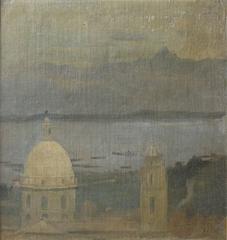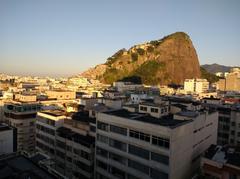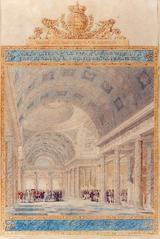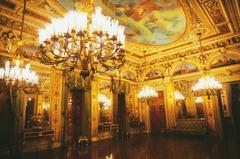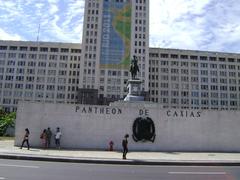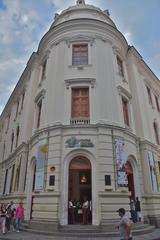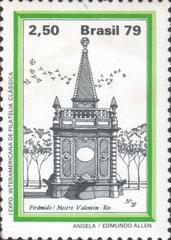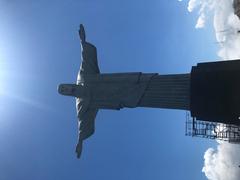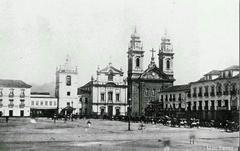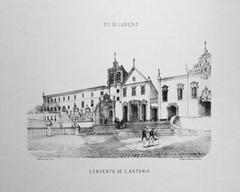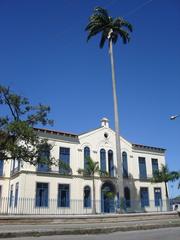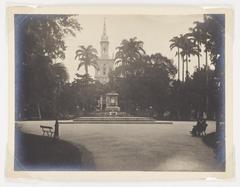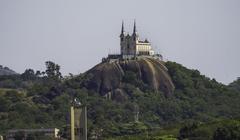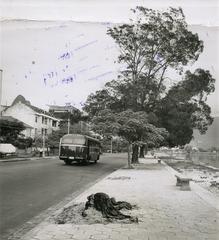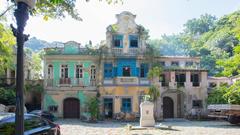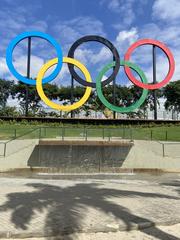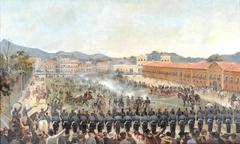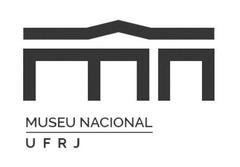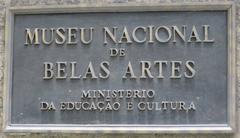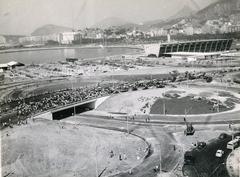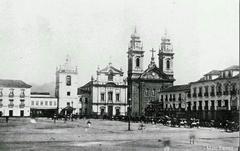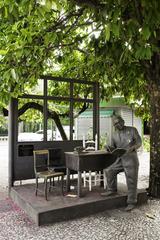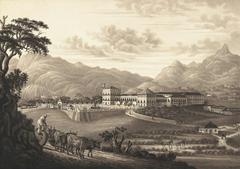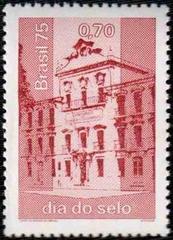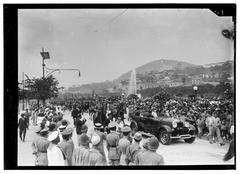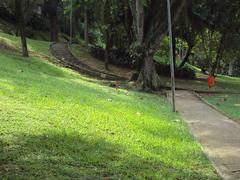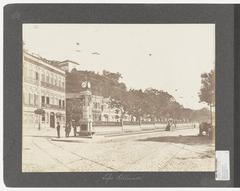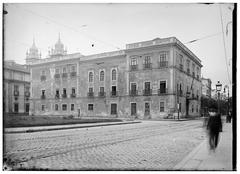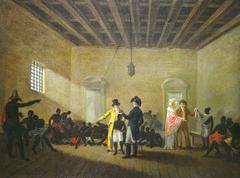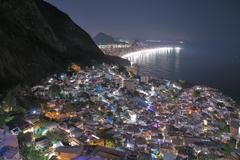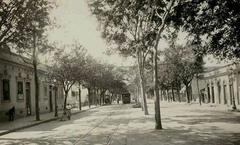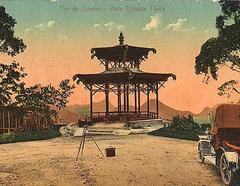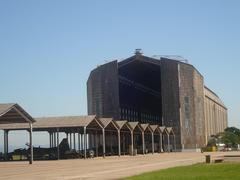
Comprehensive Guide to Visiting Rio de Janeiro, Brazil
Date: 14/08/2024
Captivating Introduction
Imagine stepping into a city where the streets vibrate with the rhythm of samba, and the sunsets are applauded like an encore performance. Welcome to Rio de Janeiro, a city that dances to its own beat, rich in history, cultural diversity, and breathtaking landscapes. Originally inhabited by indigenous groups such as the Tupi, Puri, Botocudo, and Maxakalí, Rio’s allure first captivated European explorers in the early 16th century (Wikipedia). Fast forward to today, and Rio is a bustling metropolis known for its iconic landmarks like the Christ the Redeemer statue and Copacabana Beach, its vibrant Carnival, and its unique blend of cultural influences (Britannica). Whether you’re here to soak in panoramic vistas from Sugarloaf Mountain or to get lost in the colorful chaos of the Selarón Steps, Rio offers an adventure for every kind of traveler. So grab your caipirinha, put on your dancing shoes, and get ready to explore the Marvelous City like a savvy local.
Table of Contents
- overview)
- [Pre-Colonial and Colonial Periods](#pre-colonial-and-colonial-periodspre-colonial-and-colonial-periods)
- [Portuguese Empire and Early Development](#portuguese-empire-and-early-developmentportuguese-empire-and-early-development)
- [The Empire of Brazil](#the-empire-of-brazilthe-empire-of-brazil)
- [The Republic of Brazil](#the-republic-of-brazilthe-republic-of-brazil)
- [The Role of Slavery](#the-role-of-slaverythe-role-of-slavery)
- [Modern Era and Urban Development](#modern-era-and-urban-developmentmodern-era-and-urban-development)
- [Christ the Redeemer](#christ-the-redeemerchrist-the-redeemer)
- [Cultural Significance and Tourism](#cultural-significance-and-tourismcultural-significance-and-tourism)
- [Local Secrets and Hidden Gems](#local-secrets-and-hidden-gemslocal-secrets-and-hidden-gems)
- [Visitor Tips](#visitor-tipsvisitor-tips)
- [Captivating Itineraries](#captivating-itinerariescaptivating-itineraries)
- carnival-of-attractions-in-rio-de-janeiro)
- [Christ the Redeemer (Cristo Redentor)](#christ-the-redeemer-cristo-redentorchrist-the-redeemer-cristo-redentor)
- [Sugarloaf Mountain (Pão de Açúcar)](#sugarloaf-mountain-pão-de-açúcarsugarloaf-mountain-pão-de-açúcar)
- [Copacabana Beach](#copacabana-beachcopacabana-beach)
- [Ipanema Beach](#ipanema-beachipanema-beach)
- [Local Secrets and Hidden Gems](#local-secrets-and-hidden-gemslocal-secrets-and-hidden-gems-1)
- [Cultural Context and Etiquette](#cultural-context-and-etiquettecultural-context-and-etiquette)
- [Interactive Elements](#interactive-elementsinteractive-elements)
- [Practical Information with a Twist](#practical-information-with-a-twistpractical-information-with-a-twist)
- [Pop Culture References](#pop-culture-referencespop-culture-references)
- [Time-Based Itineraries](#time-based-itinerariestime-based-itineraries)
- [Local Lingo Lessons](#local-lingo-lessonslocal-lingo-lessons)
- [Seasonal Highlights](#seasonal-highlightsseasonal-highlights)
- [Myth Busting and Surprises](#myth-busting-and-surprisesmyth-busting-and-surprises)
- [Storytelling Elements](#storytelling-elementsstorytelling-elements)
- [FAQ](#faqfaq)
- [Call to Action](#call-to-actioncall-to-action)
- rio-de-janeiro-insider-tips-for-an-unforgettable-visit)
- [Welcome to the Marvelous City](#welcome-to-the-marvelous-citywelcome-to-the-marvelous-city)
- [Safety Precautions](#safety-precautionssafety-precautions)
- [Health and Wellness](#health-and-wellnesshealth-and-wellness)
- [Cultural Etiquette](#cultural-etiquettecultural-etiquette)
- [Navigating the City](#navigating-the-citynavigating-the-city)
- [Hidden Gems and Local Secrets](#hidden-gems-and-local-secretshidden-gems-and-local-secrets)
- [Sensory Descriptions](#sensory-descriptionssensory-descriptions)
- [Carnival Tips](#carnival-tipscarnival-tips)
- [Practical Information](#practical-informationpractical-information)
- [Seasonal Highlights](#seasonal-highlightsseasonal-highlights-1)
- [Local Lingo Lessons](#local-lingo-lessonslocal-lingo-lessons)
- to-action-1)
Historical Overview
Pre-Colonial and Colonial Periods
Imagine the vibrant rhythms of samba filling the air—now picture Rio de Janeiro centuries before it became the bustling metropolis we know today. Originally, this paradise was home to indigenous groups like the Tupi, Puri, Botocudo, and Maxakalí peoples (Wikipedia). The first European eyes to marvel at its beauty were part of a Portuguese expedition led by Gaspar de Lemos, or perhaps Gonçalo Coelho, on January 1, 1502. Mistaking Guanabara Bay for the mouth of a massive river, they named it ‘Rio de Janeiro’ or ‘January River’ (Wikipedia).
In 1555, French colonists led by Admiral Nicolas Durand de Villegaignon made a bold move to set up shop on one of Guanabara Bay’s islands, calling it France Antarctique. Spoiler alert: the Portuguese weren’t fans and expelled the French by 1567 (Wikipedia).
Portuguese Empire and Early Development
Founded by the Portuguese in 1565, Rio de Janeiro was initially the seat of the Captaincy of Rio de Janeiro, within the Portuguese Empire. By 1763, it had morphed into the capital of the State of Brazil (Wikipedia). The city’s star truly rose in 1808 when the Portuguese Royal Court fled Napoleon’s invasion and made Rio de Janeiro the de facto capital of the Portuguese Empire. Talk about a plot twist—what other colony can say it became the seat of its colonizing country? (Wikipedia)
The Empire of Brazil
When Brazil declared its independence from Portugal in 1822, Rio de Janeiro remained its capital. The city thrived on the booming sugar cane and coffee industries. By 1834, to separate the province from the capital of the Empire, Rio de Janeiro was designated as a Neutral Municipality, with Niterói becoming the provincial capital (Wikipedia).
The Republic of Brazil
In 1889, Brazil swapped its empire for a republic, and Rio de Janeiro retained its capital status until 1960 when Brasília took over. Yet, Rio’s allure didn’t fade; it remained a vibrant commercial and cultural hub (Britannica).
The Role of Slavery
Rio de Janeiro was a major player in the Atlantic slave trade. Between 1811 and 1831, an estimated 500,000 to a million African slaves arrived through Valongo Wharf, now a UNESCO World Heritage Site (Wikipedia). By 1840, the city had a slave population of around 220,000, making it one of the largest slave ports in the Americas (Wikipedia).
Modern Era and Urban Development
The 20th century saw Rio de Janeiro blossom into a modern metropolis. Hosting the 2014 FIFA World Cup and the 2016 Summer Olympics brought global attention and investment. Despite challenges like crime and economic disparity, Rio remains a city of vibrant culture and iconic landmarks like the Christ the Redeemer statue and Copacabana Beach (Nomadic Matt).
Christ the Redeemer
Standing tall since 1931, the Christ the Redeemer statue is a marvel of Art Deco architecture. At 98 feet in height, with arms stretching 92 feet wide, it’s the world’s largest Art Deco statue. Proposed by Rio’s Roman Catholic archdiocese in 1921 and funded by Brazilian Catholic donations, it’s a symbol of the city and the nation, drawing millions of visitors each year (World Atlas, Britannica).
Cultural Significance and Tourism
Rio de Janeiro is synonymous with its annual Carnival, a dazzling display of the city’s rich cultural heritage that attracts millions of tourists. From indigenous roots to African and European influences, Rio’s music, dance, and cuisine are a sensory feast (Infoexplora).
Local Secrets and Hidden Gems
While everyone knows about Copacabana and Christ the Redeemer, have you heard of the Selarón Steps? Artist Jorge Selarón transformed this staircase into a colorful mosaic masterpiece. Or how about Pedra do Sal, the birthplace of samba, where you can experience live samba sessions in an intimate setting? For a quirky twist, check out the Museum of Tomorrow, a futuristic science museum that looks like it belongs in a sci-fi movie.
Visitor Tips
Rio’s charm comes with a few caveats. Stay savvy by avoiding isolated areas at night and keeping an eye on your belongings. Learn some Portuguese phrases to blend in better—locals appreciate the effort. For a sensory treat, don’t miss trying local delicacies like feijoada (a hearty black bean stew) and caipirinhas, the national cocktail (The Unknown Enthusiast).
Captivating Itineraries
Why not embark on a themed adventure? Picture this: a day dedicated to exploring Rio’s hidden gems, starting with breakfast at a local bakery, followed by a visit to the Selarón Steps, lunch at a hidden bistro, and an evening samba session at Pedra do Sal. Or immerse yourself in history with a tour of colonial sites, ending with a sunset at Sugarloaf Mountain.
A Carnival of Attractions in Rio de Janeiro
Christ the Redeemer (Cristo Redentor)
Welcome to Rio, where the Christ the Redeemer statue stretches its arms wide, as if to say, ‘Bem-vindo!’ Perched atop the 709-meter-high Corcovado Mountain, this 30-meter-tall statue has been gazing over the city for nearly a century. Picture your journey up: a 20-minute incline railway ride through a lush jungle, with the anticipation building as you climb. On a clear day, the views are nothing short of divine (PlanetWare).
Sugarloaf Mountain (Pão de Açúcar)
Next stop on our samba journey: Sugarloaf Mountain. Rising 396 meters above the harbor, this peak offers panoramic views that will take your breath away. Cable car rides to the summit provide stunning vistas of the city, beaches, and lush landscapes. Pro tip: visit early in the day to beat the crowds and revel in the clear August skies (PlanetWare).
Copacabana Beach
Ah, Copacabana Beach! This 2.5-mile stretch of golden sand is where Rio’s heart beats strongest. Picture yourself strolling along the wide beach, feeling the warm sand between your toes, and hearing the distant laughter of children playing in the surf. August brings pleasant weather and fewer crowds, making it the perfect time to soak in the lively atmosphere (PlanetWare).
Ipanema Beach
From the famous tune ‘The Girl from Ipanema’ to the vibrant local culture, Ipanema Beach is a must-visit. But did you know about Pedra do Arpoador? This lesser-known rock formation offers one of the best sunset views in Rio. Pro tip: join the locals in applauding the sunset—it’s a cherished tradition!
Local Secrets and Hidden Gems
Discover the lesser-known gems of Rio! Explore the Selarón Steps, a colorful mosaic staircase created by artist Jorge Selarón. Or visit Parque Lage, a public park with a historic mansion, now an art school, and hidden trails that lead to the foot of Corcovado Mountain.
Cultural Context and Etiquette
When in Rio, do as the Cariocas do! Embrace the laid-back lifestyle, greet people with a friendly ‘Olá!’ or ‘Tudo bem?’ and don’t forget to say ‘Obrigado’ (thank you). Sundays are for family and feijoada—a traditional black bean stew. Join the locals and savor this hearty dish.
Interactive Elements
Challenge: Find the hidden street art in Santa Teresa! This bohemian neighborhood is a treasure trove of murals and graffiti. Snap a photo of your favorite and share it using #RioArtHunt.
Practical Information with a Twist
Getting around Rio is easy with the Metro, but for a fun twist, take a ‘bondinho’ (tram) ride in Santa Teresa. It’s like traveling back in time. Or try rhyming your way through the city: ‘To Sugarloaf I go, with cable cars in tow!’
Pop Culture References
Feel the rhythm of Rio with references from movies like ‘City of God’ and songs like ‘Mas Que Nada.’ Picture yourself in scenes from ‘Fast Five,’ which features thrilling car chases through the city’s iconic streets.
Time-Based Itineraries
Choose Your Adventure: Morning hike up Pedra Bonita for a paragliding experience, followed by an afternoon at the Botanical Garden. Or, opt for a leisurely day exploring the Museum of Tomorrow and the historic district of Lapa.
Local Lingo Lessons
Portuguese 101: ‘Bom dia’ (Good morning), ‘Por favor’ (Please), and ‘Qual é?’ (What’s up?). Use ‘Ginga’ to describe the smooth, swaying dance moves of samba, and impress locals with your newfound lingo!
Seasonal Highlights
Rio shines year-round! In February, join the world’s biggest Carnival with elaborate parades and street parties. Come June, experience Festas Juninas, traditional festivities with bonfires, dances, and delicious food. Each season brings its own magic.
Myth Busting and Surprises
Myth: Rio is all about beaches. Reality: The city boasts lush rainforests, stunning mountain hikes, and a vibrant art scene. Did you know Rio has the largest urban forest in the world, the Tijuca Forest?
Storytelling Elements
Legend has it, the Selarón Steps began as a simple home improvement project by Jorge Selarón. Over time, it evolved into a masterpiece visited by millions. Another tale: the mysterious disappearance of the original cable car that once served Sugarloaf Mountain.
FAQ
Q: Is Rio safe for tourists?
A: Like any major city, Rio has safe and less safe areas. Stick to popular tourist spots, avoid displaying valuables, and use reputable transport services.
Q: What’s the best way to get around?
A: The Metro is efficient and safe. Taxis and ride-sharing apps are also widely used. For a scenic experience, try the Santa Teresa tram.
Q: When is the best time to visit?
A: For fewer crowds and pleasant weather, visit in August. For the ultimate cultural experience, visit during Carnival in February.
Call to Action
Ready to explore Rio de Janeiro like never before? Download Audiala, your ultimate audio guide companion. Discover the city’s rich history, hidden gems, and vibrant culture through beautifully crafted, concise yet deep audio guides. Let’s make your Rio adventure unforgettable!
Uncover Rio de Janeiro: Insider Tips for an Unforgettable Visit
Welcome to the Marvelous City
Picture this: The sun setting over the iconic Christ the Redeemer statue, casting a golden glow across the city. Welcome to Rio de Janeiro, a city that pulsates with life, color, and rhythm. Ready to dive in? Here’s your ultimate guide, straight from a witty local friend who knows all the ins and outs.
Safety Precautions
Ditch the Bling: In Rio, less is more when it comes to accessories. Leave your flashy jewelry at home and keep gadgets out of sight. Opt for a small backpack and blend in like a savvy Carioca (GloboTreks).
Stay in the Safe Zones: Stick to the southern neighborhoods like Ipanema, Leblon, and Copacabana. These areas are tourist-friendly and generally safe. Steer clear of favelas unless on a guided tour and avoid places like Rocinha, Vila Mimosa, and Bangu (Travellers Worldwide).
Ride Smart: Skip the public buses after dark. Instead, use the metro, Uber, or yellow taxis. When in doubt, ask your hotel for transportation tips (GloboTreks).
Night Owl Tips: As night falls, stick to well-lit, busy areas. Rio’s beaches and parks are beautiful but can be risky when deserted. Stick to where the action is (GloboTreks).
Health and Wellness
Hydrate and Protect: With Rio’s tropical heat, always carry water and slather on that sunscreen. Your skin will thank you.
Dodge the Bugs: To avoid insect-borne diseases like dengue, use repellent and cover up, especially in the evening and forested areas (Travellers Worldwide).
Respect the Waves: Rio’s beaches are stunning, but the riptides can be powerful. Swim only in designated areas with lifeguards.
Cultural Etiquette
Portuguese 101: Learning a few Portuguese phrases can enhance your trip. Try greetings like “Olá” (hello) and “Obrigado” (thank you). Locals appreciate the effort (GloboTreks).
Mind the Manners: Brazilians are warm and friendly. A handshake or a kiss on the cheek is common when greeting. Use titles like Senhor or Senhora until invited to use first names.
Navigating the City
Smart Transit: Rio’s metro is safe and efficient, especially during the day. Be cautious on buses after dark and watch out for pickppockets in crowded areas (The Green Voyage).
Walk the Walk: Many of Rio’s gems are best explored on foot. Join a walking tour to soak in the vibrant neighborhoods and street art. Just stay aware of your surroundings and avoid walking alone at night.
Hidden Gems and Local Secrets
Botafogo Bay: Escape the tourist hotspots and head to Botafogo Bay for a stunning view of Sugarloaf Mountain without the crowds.
Feira de São Cristóvão: Dive into Brazilian culture at this lively market, where you can find traditional food, music, and crafts.
Pedra do Sal: Experience an authentic samba night in this historic area, where locals gather to dance and celebrate.
Sensory Descriptions
Christ the Redeemer: Feel the cool breeze as you stand beneath this iconic statue, soaking in panoramic views of the city. Reach it via a scenic train ride through the lush Tijuca Forest (Planet Travel Advisor).
Copacabana and Ipanema Beaches: Imagine the sound of waves crashing on the shore, the scent of salt in the air, and the taste of a refreshing caipirinha in hand. Explore the bustling promenades and chic cafes (The Green Voyage).
Carnival Tips
Get Ready to Party: Plan ahead for Rio’s legendary Carnival. Buy Sambadrome tickets early and consider joining a samba school for the full experience (Planet Travel Advisor).
Stay Savvy: During the festivities, keep your belongings secure, avoid carrying large amounts of cash, and stick with your group in crowded areas (Planet Travel Advisor).
Practical Information
Money Matters: The Brazilian Real (BRL) is the local currency. Cards are widely accepted, but it’s wise to carry some cash for smaller purchases.
Emergency Contacts: Know the local emergency numbers: 190 for police, 192 for medical help, and 193 for fire services.
Travel Insurance: Protect yourself with travel insurance covering health, accidents, and theft. It’s a small price for peace of mind (GloboTreks).
Seasonal Highlights
Summer Vibes: December to March is summer in Rio, perfect for beach lovers. Don’t miss the New Year’s Eve celebrations on Copacabana Beach.
Winter Wonders: June to September is winter, with cooler temperatures and fewer crowds. A great time for sightseeing and hiking in Tijuca National Park.
Local Lingo Lessons
Say It Right: Try these phrases: “Bom dia” (Good morning), “Tudo bem?” (How are you?), and “Onde fica…” (Where is…). Pronunciation adds to the fun!
Call to Action
Ready to explore Rio? Download the Audiala tour guide app for an insider’s journey through the Marvelous City. Packed with more tips, local secrets, and interactive maps, it’s your perfect companion for a memorable adventure.
By following these tips and embracing the vibrant culture, stunning landscapes, and lively atmosphere, your trip to Rio de Janeiro will be nothing short of extraordinary.
Call to Action
From its indigenous roots and colonial intrigues to its modern-day vibrancy, Rio de Janeiro is a city that never ceases to amaze. Whether you’re marveling at the Christ the Redeemer statue, strolling along the golden sands of Copacabana, or losing yourself in the samba rhythms at Pedra do Sal, Rio promises an unforgettable experience. Despite its challenges, including economic disparities and safety concerns, Rio’s resilient spirit and rich cultural tapestry make it a must-visit destination (Nomadic Matt, The Unknown Enthusiast). So why not take the plunge and discover the magic of Rio for yourself? Download Audiala, your ultimate tour guide app, to unlock the city’s secrets and stories, making your journey through Rio de Janeiro as enriching as it is exhilarating. Ready to explore? The Marvelous City awaits.
References
- Wikipedia contributors. (n.d.). Rio de Janeiro. In Wikipedia, The Free Encyclopedia. Retrieved from https://en.wikipedia.org/wiki/Rio_de_Janeiro
- Nomadic Matt. (n.d.). Rio de Janeiro Travel Guide. Retrieved from https://www.nomadicmatt.com/travel-guides/brazil-travel-tips/rio-de-janeiro/
- Britannica, T. Editors of Encyclopaedia (n.d.). Rio de Janeiro. Encyclopedia Britannica. Retrieved from https://www.britannica.com/place/Rio-de-Janeiro-Brazil
- The Unknown Enthusiast. (n.d.). Rio de Janeiro Travel Tips. Retrieved from https://theunknownenthusiast.com/rio-de-janeiro-travel-tips/


